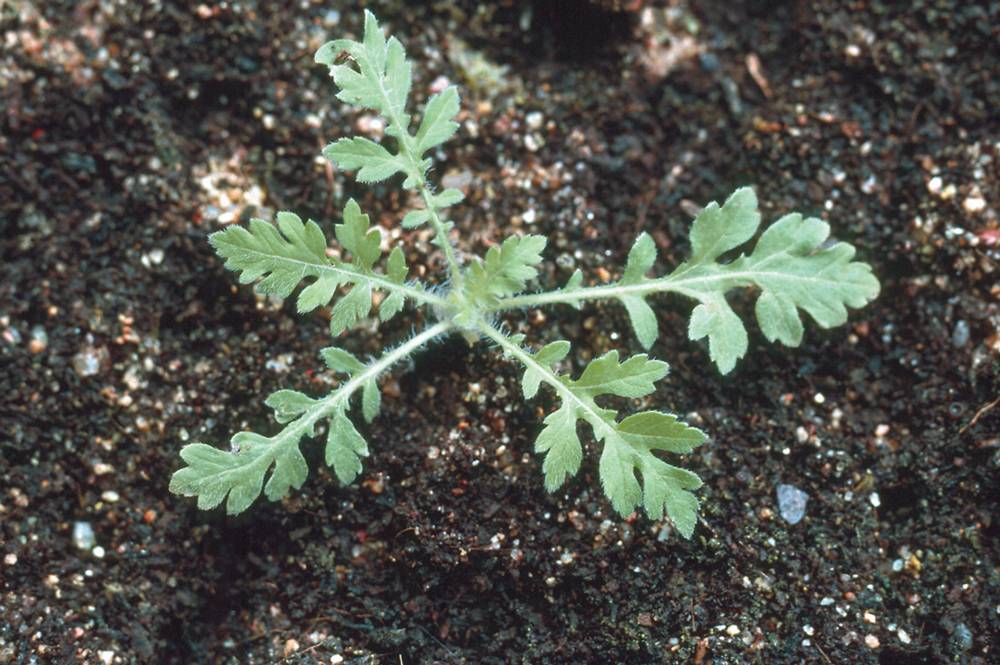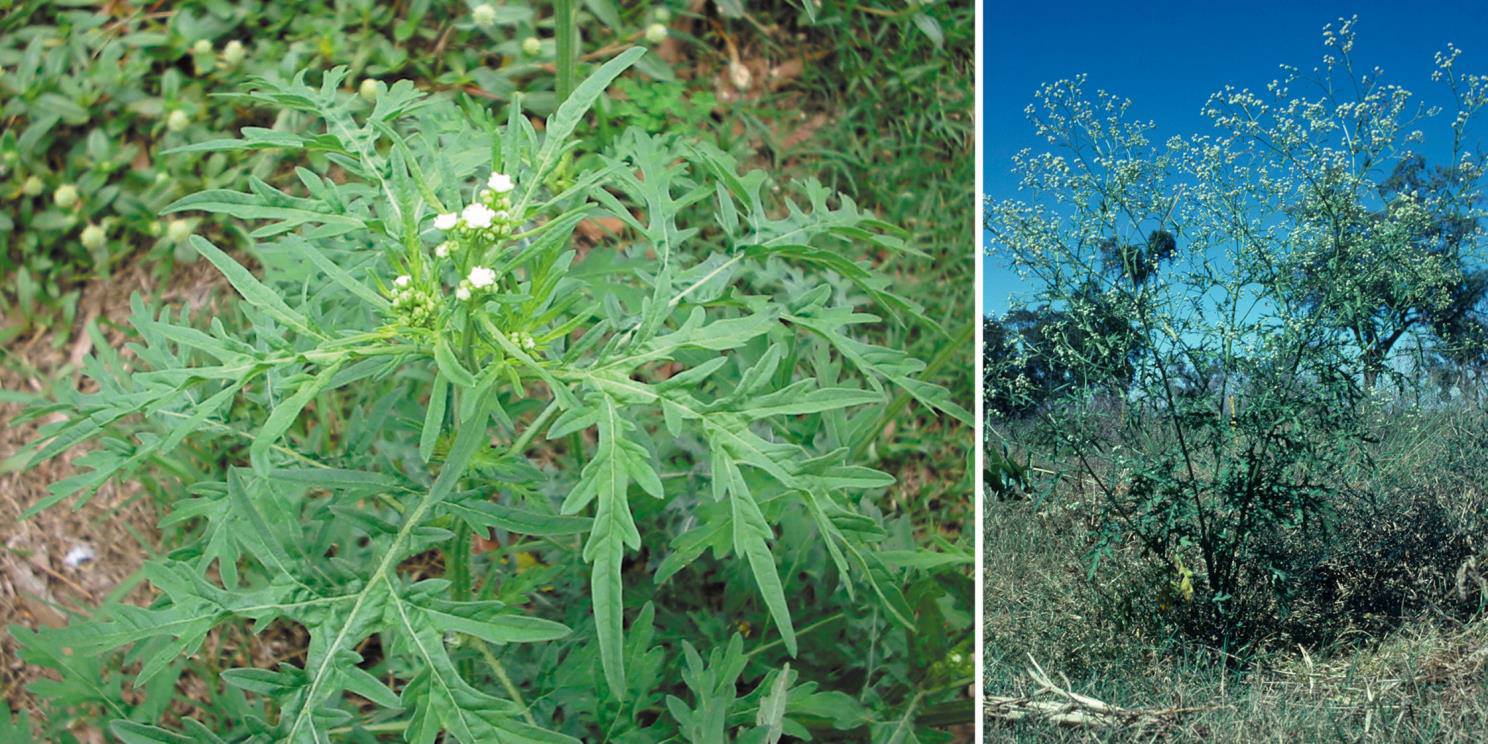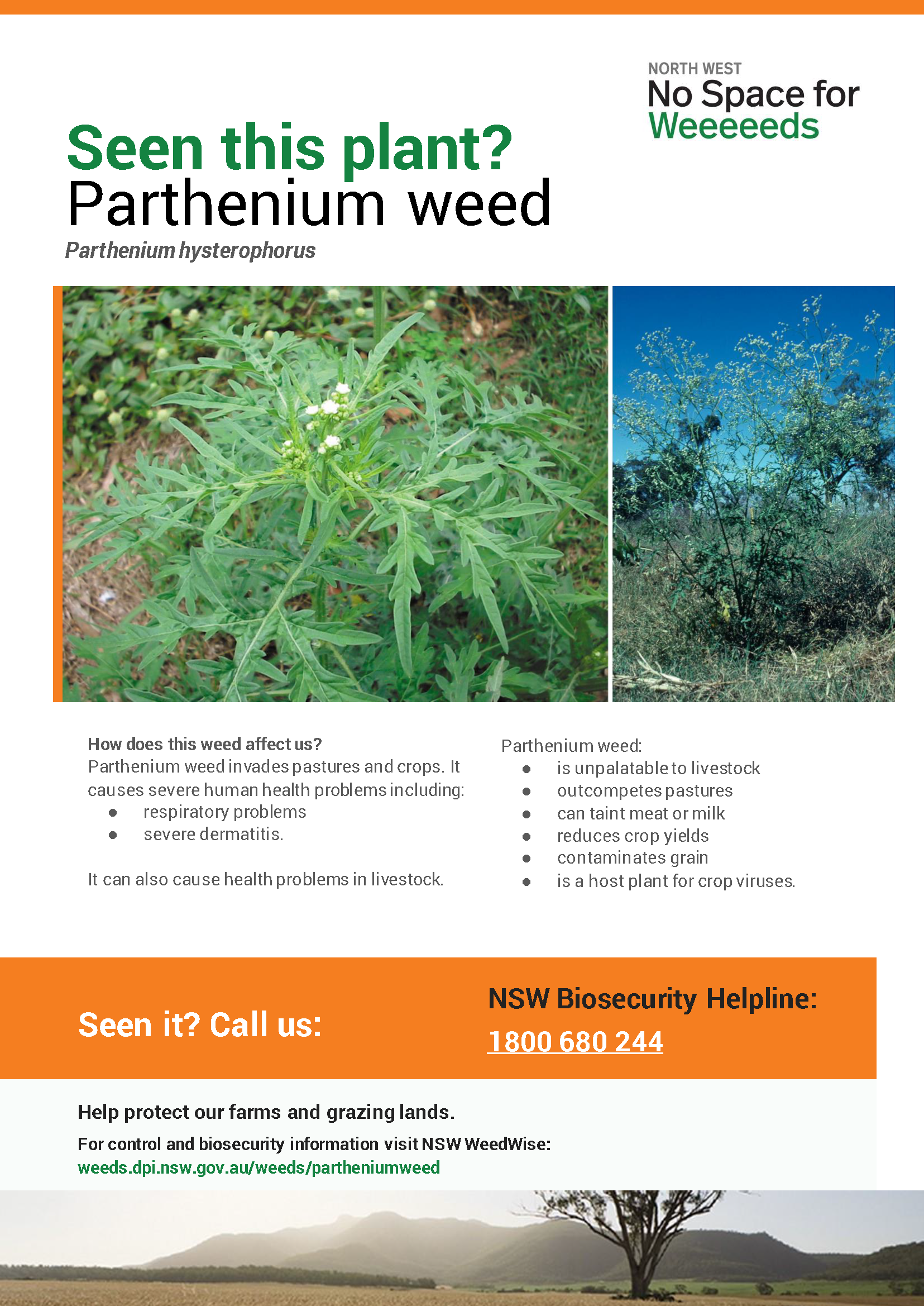Parthenium Weed
Parthenium weed (Parthenium hysterophorus) invades pastures and crops. It can cause severe human health problems and may cause health problems in livestock.
Parthenium weed is a priority weed across NSW. has recently been found near Walgett, Forbes and Engadine. It may also have spread into other locations. Look for it along roadsides, especially those that have regular traffic from Queensland such as the Newell Highway.
Regularly check areas where grain and hay have been fed to livestock, especially after rain and if it has come from Queensland.


Parthenium weed is a fast-growing plant with small white flowers. It can cause allergic reactions in humans and is a serious agricultural weed. It spreads by seed. Seeds that are close to the soil surface germinate readily, however buried seeds can remain dormant for many years.
Parthenium weed grows quickly, which is what makes it such a difficult weed to control. It out-competes other plants by competing for nutrients and moisture and by releasing chemicals into the soil that inhibit growth.
Why is Parthenium weed a problem?
- causes human and livestock health problems
- is unpalatable to stock
- outcompetes degraded or drought-affected pastures
- reduces carrying capacity
- competes with crop seedlings including sunflowers and sorghum
- reduces crop yields
- contaminates grain
- is a host for crop viruses.
How can I tell if it’s on my property?
Parthenium weed is an erect annual herb, it usually grows between 1- 2 m tall.
Leaves are pale green, covered with soft, fine hair and alternate on the stem. The lower leaves are 5 - 20 cm long and deeply divided while the upper leaves are less divided and smaller. Most leaves die after the plant flowers.
Seeds are dark brown or black, 1 - 2 mm across, flattened and triangular with two thin, white, spoon-shaped appendages.
Stems are grooved or ribbed, making them appear striped. The stems can be woody with age and are highly branched off the upper half of the main stem during flowering.
Before flowering, Parthenium weed can be mistaken for annual ragweed (Ambrosia artemisiifolia) and greater beggar’s ticks (Bidens subalternans.) During flowering, it can resemble bishop’s weed (Ammi majus) and hemlock (Conium maculatum).
Thanks to Petaurus Education Group and our local council weed officers at Greater Hume Council for this feature video:
What to do if you suspect Parthenium weed?
Parthenium weed is classed as prohibited matter.
If you see this plant anywhere in NSW, please call the NSW Biosecurity Helpline on 1800 680 244 or send an email to weeds@dpi.nsw.gov.au
More information can be found in the attached information sheet. Or visit NSW WeedWise.
Download the two page PDF here.
